我的联系人在重复。我该怎么办?
一小部分 Shared Contacts Manager 用户偶尔会遇到联系人重复的问题。这通常是一个或多个因素共同作用的结果。由于这些因素通常源于用户的 Google 账户或工作区设置,因此我们的团队很难直接发现或解决这些问题。我们无法访问用户账户或其特定配置,因此根本原因往往被隐藏起来。
不过,随着时间的推移,我们发现了一套行之有效的方法,可以帮助解决这个问题,更重要的是,可以防止它再次发生。理想情况下,最好提前采取这些预防措施,因为这总比事后清理重复文件要容易得多。如果你已经面临这个问题,那么其中一种方法或几种方法的组合会有所帮助。本指南将解释恢复正确账户设置的步骤,并在必要时清理共享联系人数据库。
删除不必要的应用程序并断开它们与 Google 账户的连接
Shared Contacts Manager (SCM)通过与谷歌账户集成并同步联系人来工作。但是,如果其他应用程序,尤其是较旧或未使用的应用程序也能访问您的通讯录,它们可能会干扰这一过程。在许多情况下,用户卸载了这些应用程序,却忘记将它们与谷歌账户完全断开。如果出现这种情况,这些应用程序仍然可以在后台访问联系人数据,并可能导致同步问题,甚至重复条目。
为降低冲突风险并确保单片机顺利运行,不仅要删除任何不必要的应用程序,还要取消它们对 Google 账户的访问权限。
从 Google 帐户中断开不必要的应用程序:
- 登录您的 Google 账户,然后点击 管理您的谷歌账户.
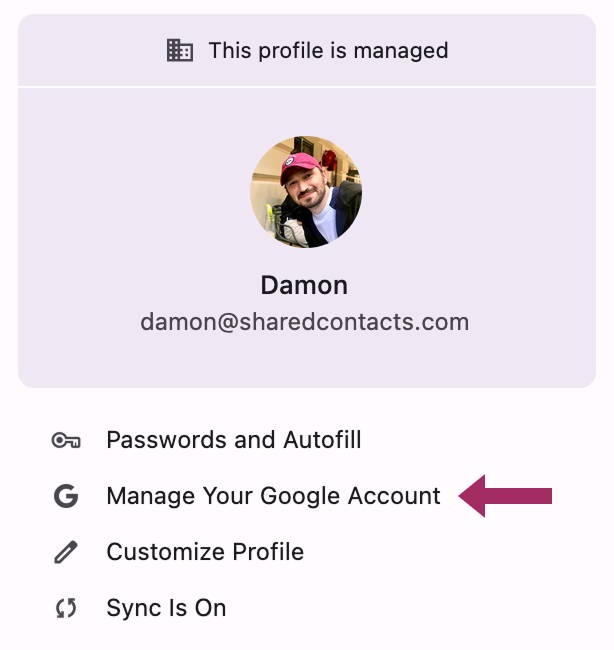
- 在左侧菜单中选择 安全.

- 向下滚动到 您与第三方应用程序和服务的连接 并点击 参见 所有连接.
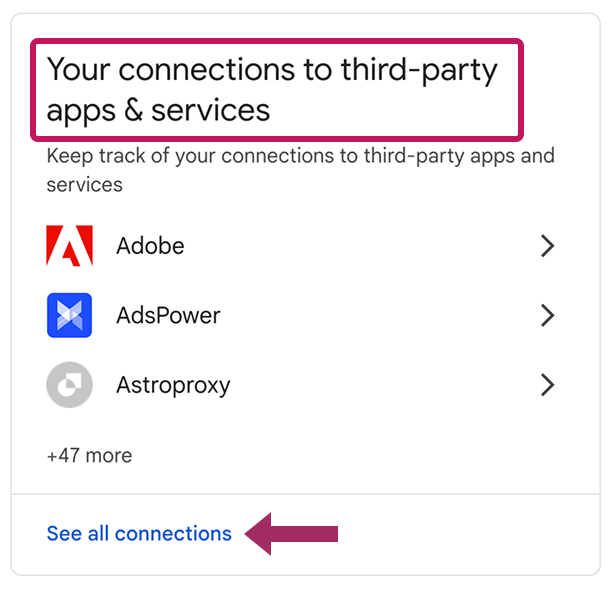
- 回顾 可访问 Google 联系人的应用程序列表.决定哪些是您实际使用和仍然需要的。
- 选择不再需要的应用程序,点击 删除所有连接然后确认您的选择。

删除不必要的应用程序
断开不必要的应用程序与 Google 账户的连接后,如果它们仍在安装,最好将其完全卸载。
要从 Google Workspace Marketplace 中删除应用程序:
- 转到 谷歌工作空间市场.
- 点击设置图标并选择 管理应用程序.
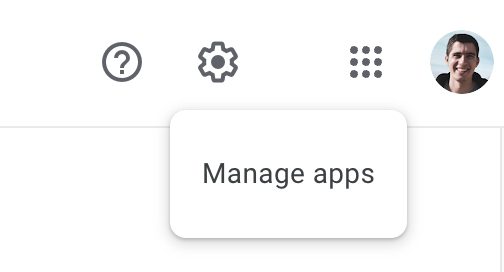
- 选择要卸载的应用程序,单击选项图标(三个点),然后单击 卸载.

这样,您就可以删除不需要的软件,并清除账户中可能干扰 Shared Contacts Manager 同步的应用程序。
整理联系人数据库
结构合理的联系人列表可以加快团队协作,减少错误,并保持数据的整洁。在共享联系人之前,请查看您的标签(联系人组),并确保它们符合以下最佳实践:
1.合并现有的重复文件
在共享联系人之前,最好先合并重复的联系人。无论如何,即使已经共享了标签,也请按照以下步骤操作:
- 暂时停止共享联系人。
- 在 Google 通讯录中,打开 合并与修复工具.
- 请你的同事在他们的账户中也这样做。如果发现重复,每个团队成员都应将其合并。
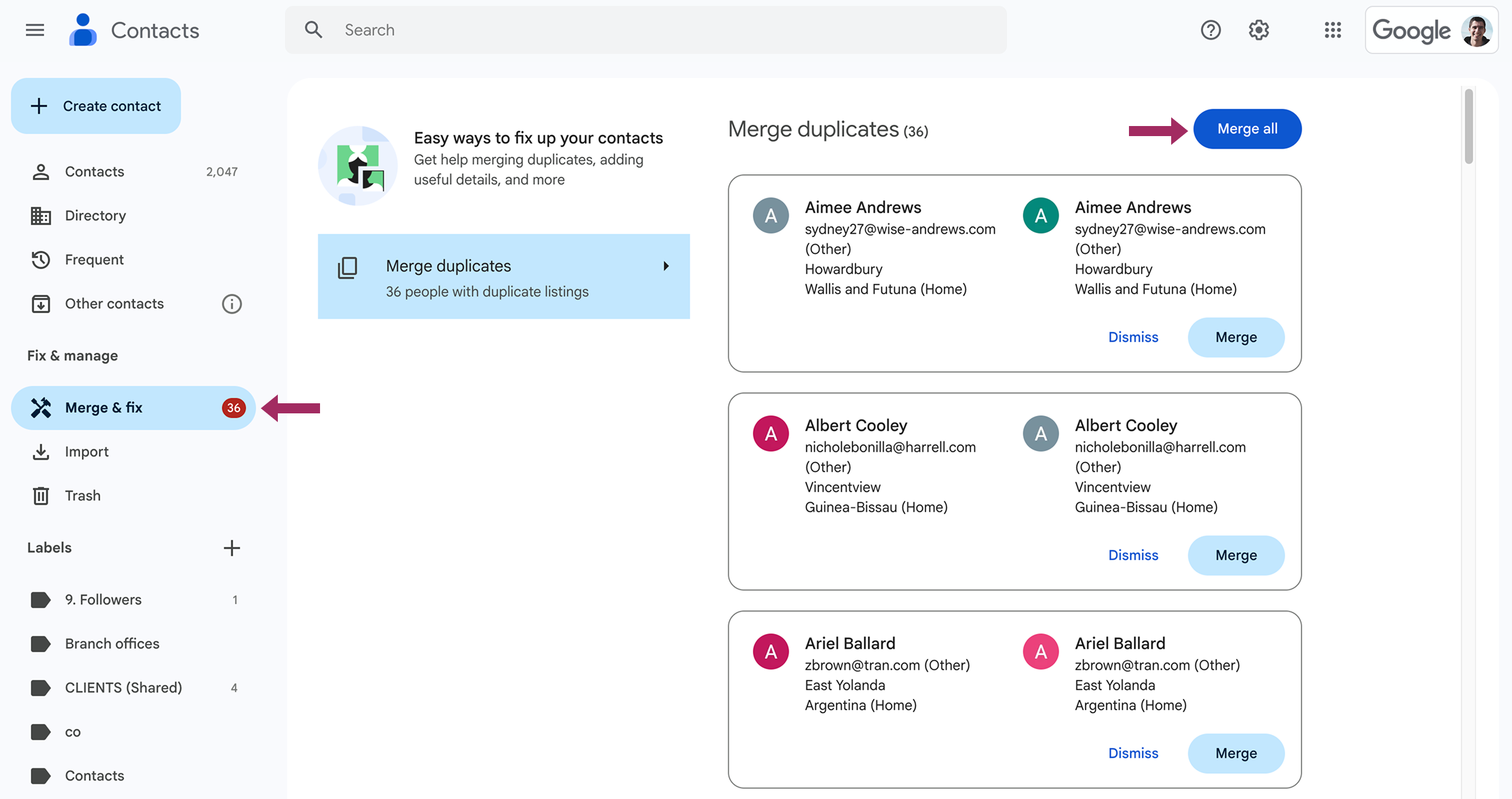
有用的提示
合并工作必须由参与联系人共享的每个团队成员完成。
当所有团队成员都将其联系人合并为一个唯一的记录后,每个账户将包含一个干净的联系人列表。然后就可以重新启用共享。
2.删除不必要的联系人
为了保持联系人列表的效率,请删除任何你不需要的记录。请记住,删除联系人时,谷歌通讯录会将其保存在垃圾桶中 30 天,然后才会永久删除。
共享联系人之前,请查看垃圾文件夹。恢复重要的内容,删除其他内容。
查看并清理垃圾:
- 开放 谷歌联系人.
- 在左侧菜单中,单击 垃圾.
- 如果您看到想要保留的联系人,请选择他们并单击 恢复.
- 要永久删除不需要的联系人,请单击 清空垃圾桶 现在
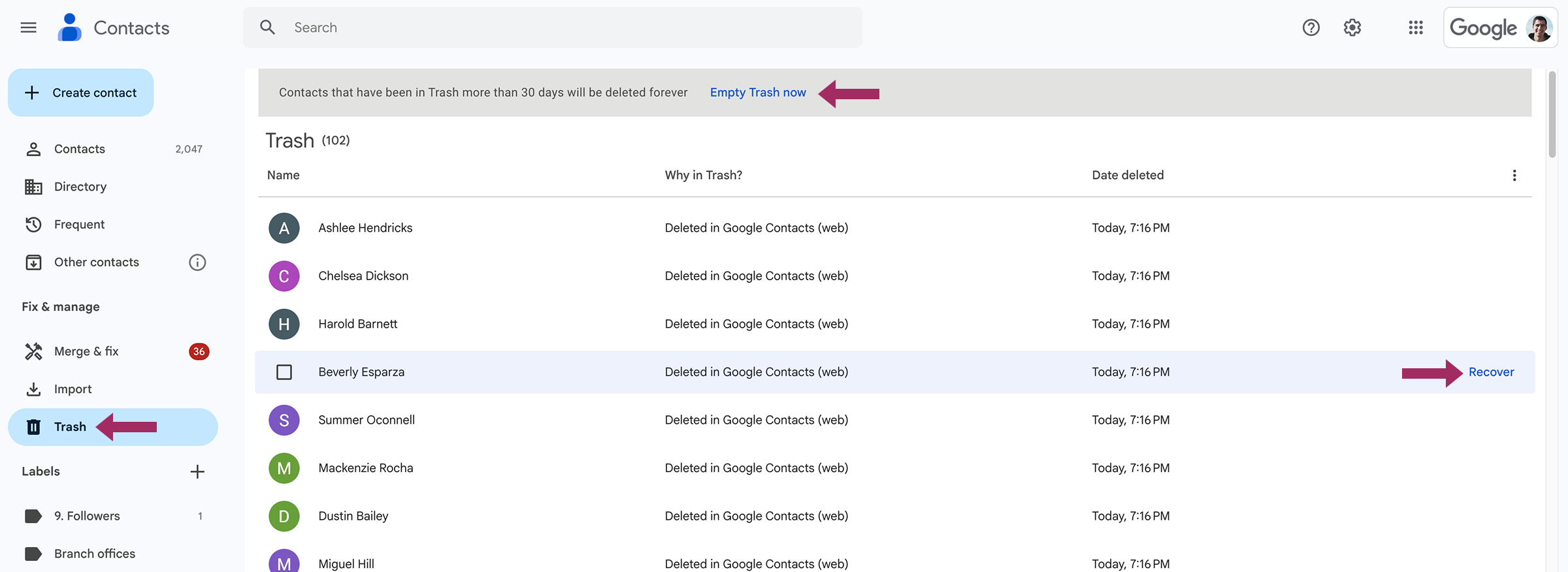
3.使用清晰、独特的标签名称
当手动或通过 CSV 将联系人导入 Google 通讯录时,他们通常会以 "导入于... "或 "myContacts "等默认标签结束。保留这些默认名称可能会造成混乱。例如,如果你与某人共享一个名为 "myContacts "的标签,而对方已经有一个同名的标签,那么哪些联系人属于哪个组就不清楚了。
为避免这种情况,可根据组织结构或活动重新命名标签。每个共享标签都应该有一个唯一的、描述性的名称,这样每个人都能立即知道它包含什么类型的联系人以及应该如何使用。
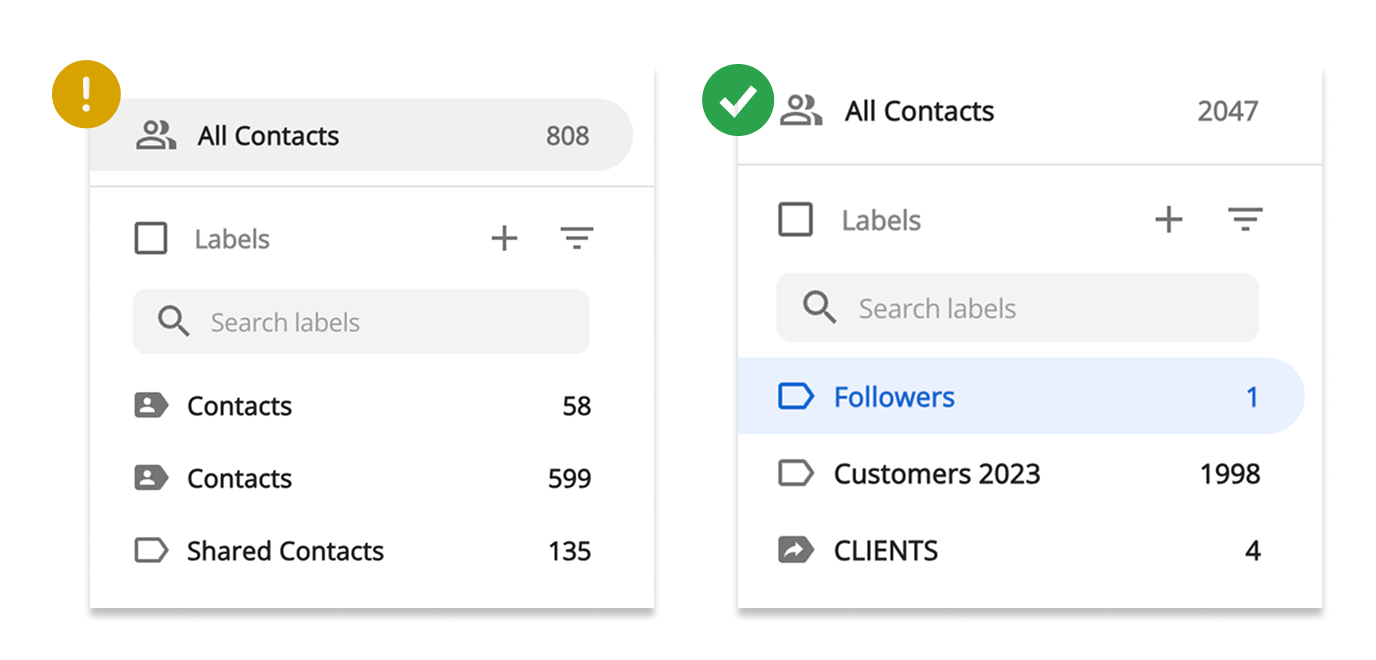
4.周到的联系方式共享
如何组织联系人共享在防止重复方面发挥着重要作用。一开始多花一点时间设置主联系人列表,以后就能节省很多时间。一旦共享组织得当,它就会顺利运行,几乎不会被你和你的同事察觉。
1.避免共享 "所有联系人"
虽然从技术上讲可以共享所有联系人,但我们不建议这样做,原因有以下几点:
- 无关数据:您的通用列表可能包含您的同事在工作中不需要的联系人。共享它们会造成不必要的混乱。
- 重复的风险:收件人可能已经拥有一些相同的联系人。如果他们再次收到您发送的联系人,就会出现重复。
- 标签混淆:共享 "所有联系人 "时,收件人看到的是一个名为 "联系人 "的组。如果收件人已经有了这个名称的标签,那么最终可能会出现两个 "联系人 "标签,这可能会造成误导。在某些情况下,根据你赋予的权限,他们可能无法重命名共享标签。
2.使用清晰的标签系统
只共享组织工作流程真正需要的联系人组。没有必要让每个人都能访问每个标签。
- 用清晰、描述性的名称创建标签。
- 根据其预期目的,为其添加合适的联系人。
- 只与需要的人分享。
3.谨慎分配权限
Shared Contacts Manager 提供四个权限级别:
- 查看 - 用户可以查看联系人,但不能编辑。
- 编辑器 - 用户可以查看和编辑联系人。
- 重新共享 - 用户可以查看、编辑并与他人共享标签。
- 所有者--完全控制,包括权限。
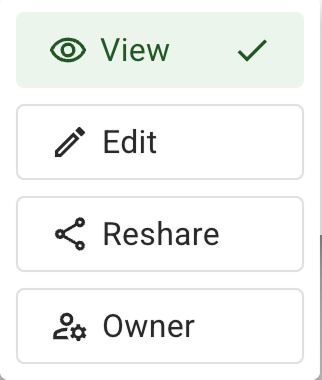
我们建议 查看 大多数用户的访问权限,尤其是当你自己管理共享联系人时。只为需要更新或维护联系人信息的可信同事分配更广泛的权限。除非绝对必要,否则避免使用 "重新共享"。
细致的权限管理可降低重复的风险,并加快定期自动同步的速度。
重新载入联系人数据库
在极少数情况下,如果前面的方法都不管用,重复的信息不断出现,那么就有必要对组织的联系人数据库进行全面重组。
这包括导出每个团队成员的联系人,将其转移到一个中央账户(通常由 Google Workspace 或 SCM 管理员管理),在一个地方合并重复的联系人,然后重新共享一个干净的数据库。
有用的提示
我们建议在 Google Workspace 管理员的监督下执行此过程。
第 1 步:在单一管理账户中收集所有联系人
选择一名经验丰富的用户(最好是您的工作区或 SCM 管理员)来管理该流程。每个团队成员都必须以 CSV 格式导出联系人,并将文件发送给管理员。
如果您是单片机的普通用户:
- 开放 谷歌联系人.
- 选择 所有联系人.
- 点击 更多行动 菜单(三个竖点)。
- 选择 出口 并选择一个位置来保存 CSV 文件.
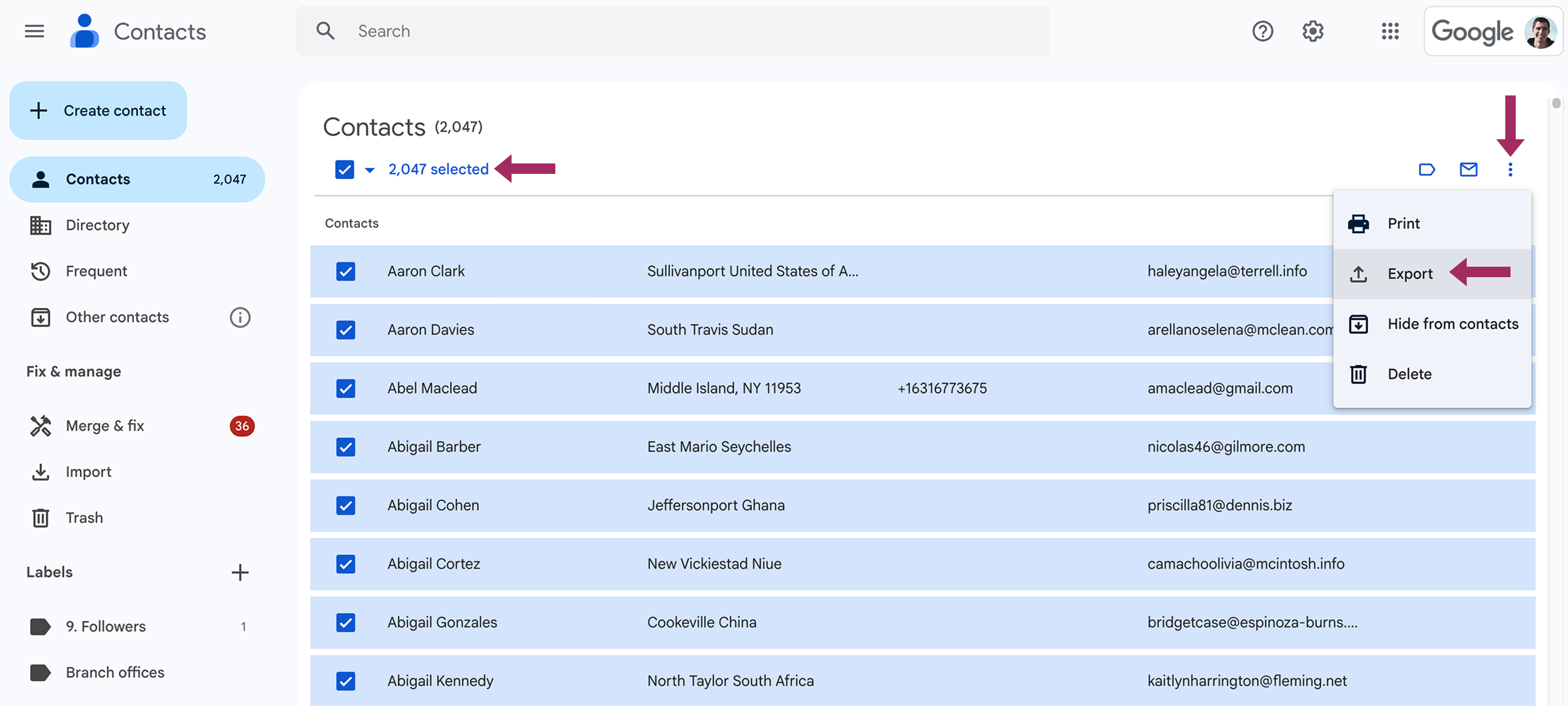
- 删除所有联系人 并清空垃圾桶。
- 发送 CSV 文件 给您的网域管理员。
如果您是域或单片机管理员:
收到所有团队成员的 CSV 文件并确认他们已清空垃圾桶后:
- 开放 谷歌联系人 在自己的账户中。
- 在左侧边栏,点击 进口.
- 导入 CSV 文件 一个一个来
- 导入所有文件后,打开 合并和修复 删除重复的联系人。

步骤 2:恢复共享
合并后,您将拥有一个干净、统一的联系人数据库。现在,您可以与同事重新共享相关标签,他们的账户将是空的,随时可以接收更新的联系人。
从一个全新的、有序的数据库开始,并应用本指南前面介绍的最佳实践,就可以防止重复问题再次出现。